Gmail -
Managing Email

Gmail
Managing Email


/en/gmail/responding-to-email/content/
As you use email more and more, your inbox can become cluttered with old messages. It's important to keep your inbox organized so you can find messages when you need them. The simplest way to deal with email clutter is to delete unwanted messages. But you can also archive messages to move them out of your inbox, or you can apply labels to your messages based on the category they're in.
In this lesson, we'll talk about deleting unwanted messages, archiving, applying labels, adding filters, and using Gmail's search feature.
Watch the video below to learn how to delete and archive messages, as well as how to manage your labels.
No matter how many emails you receive, you'll probably never run out of space. Gmail gives you enough space to hold countless emails and their attachments. However, it's a good idea to delete messages you don't want to make it easier to find the ones you do want.
While viewing the message, click the Delete button.

If the message is a part of a conversation, the entire conversation will be deleted. If you just want to delete one message in a conversation, click the drop-down arrow in the top-right corner of the message and select Delete this message.
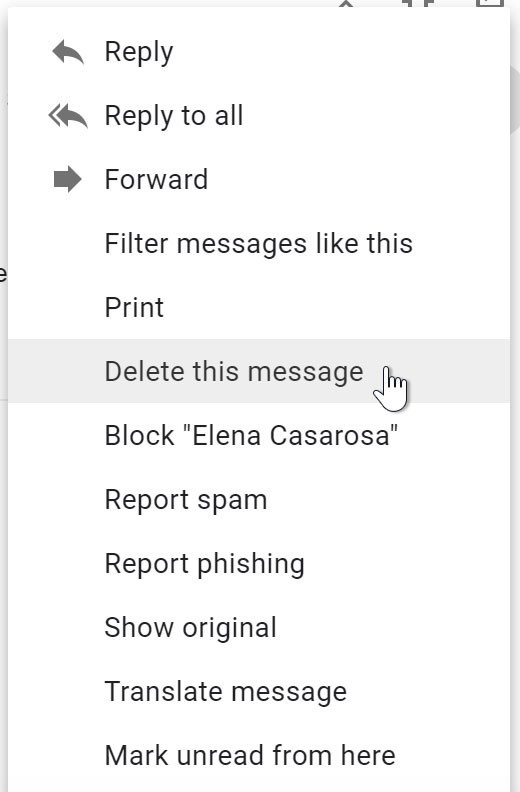
Usually, spam—or junk email—is automatically sent to your Spam folder, so it never gets to your inbox. However, some spam still gets past Gmail's spam filter. Instead of simply deleting these messages, it's best to Report them as spam so Gmail knows to filter them out in the future. The process is the same as deleting a message, except that you'll click the Report spam button instead.

Messages in your Spam folder are automatically deleted after 30 days, so you'll never have to worry about deleting them manually.
Sometimes you may want to remove emails from your inbox, but you don't want to delete them. Gmail allows you to archive messages so they will no longer appear in your inbox. Because you can still access archived messages, it's a safer alternative to deleting.
While viewing the message, click the Archive button.

In the left menu pane, click the more drop-down arrow and select All Mail.
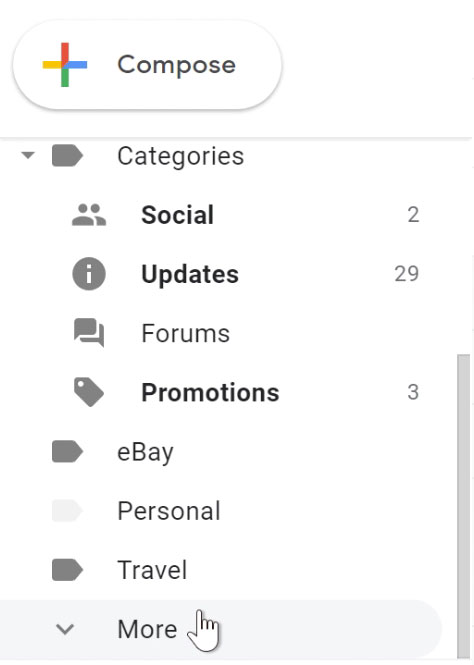
It will then display all of your messages, including archived messages and the messages in your inbox.
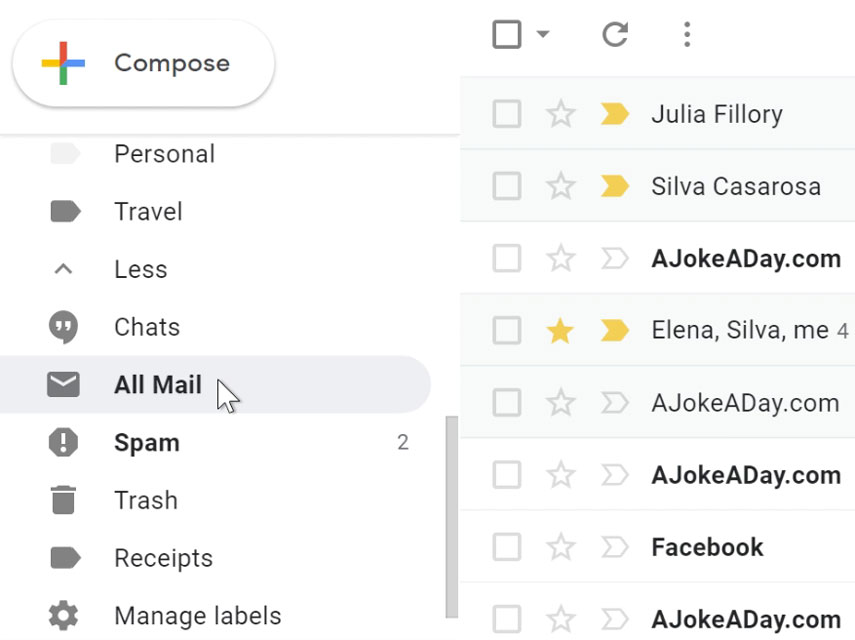
If you're deleting, archiving, or reporting spam, you can take action on several messages at a time by selecting them in your inbox. Simply place a check mark next to each message you want to manage, then click the desired button. You can also click the top check mark to select all of the messages that are currently visible.

Labels allow you to organize your messages and make them easier to find. Applying a label to a message is like putting it into a folder, with one important difference: You can apply more than one label to a message. For example, if you received a message about a company trip, you could label it as Travel and Work. You can choose to label only the most important messages, or you can label every single one—it's up to you. You can create new labels whenever you need to, and you can also choose a color that will make the label stand out.


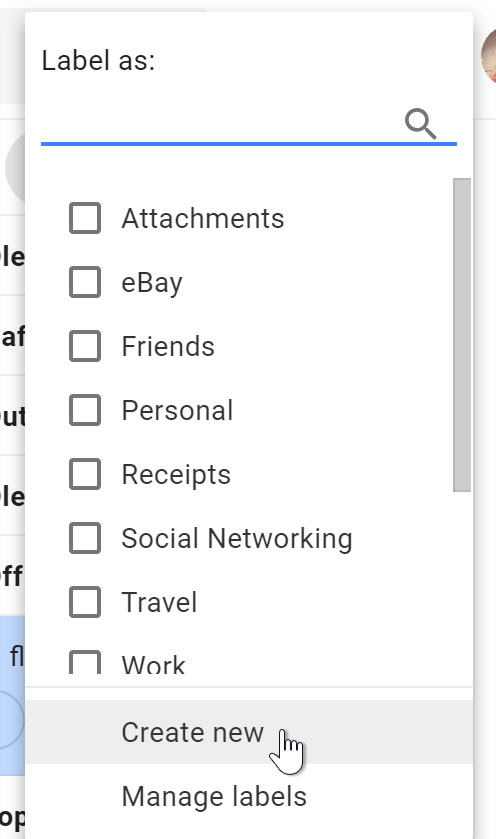
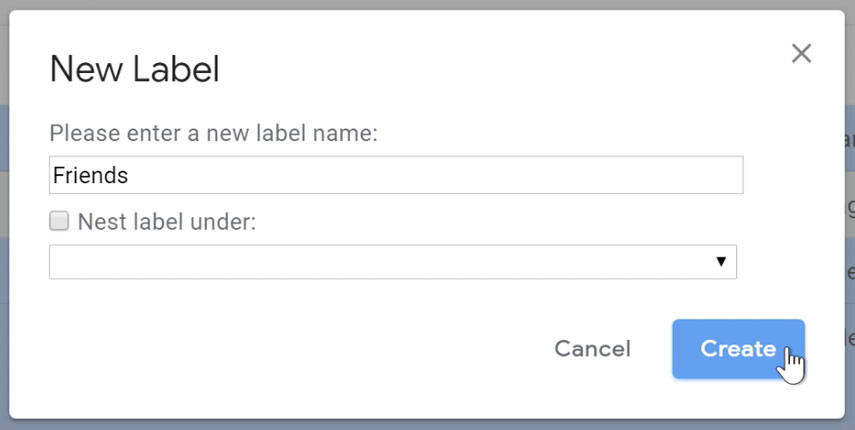
Once you've added labels to some of your messages, you can easily view all of the messages that contain a particular label. This is where all of the time spent labeling messages pays off. For example, you may want to view messages with the label Travel so you can see everything that pertains to an upcoming trip.
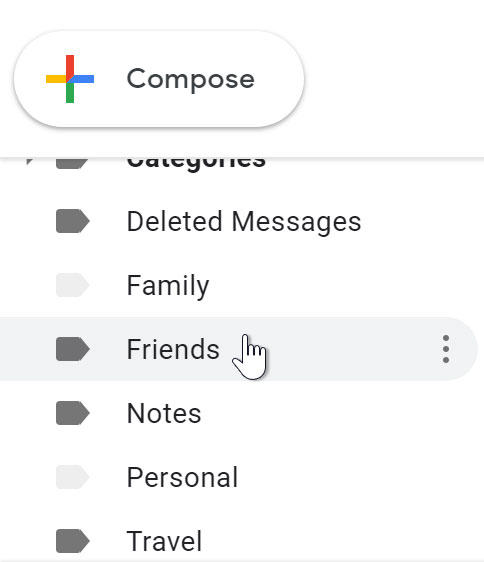

Some labels may be hidden. If you don't see the label you want, click the More drop-down arrow to view the hidden labels. From here, you can also click Manage labels to control which ones are hidden.

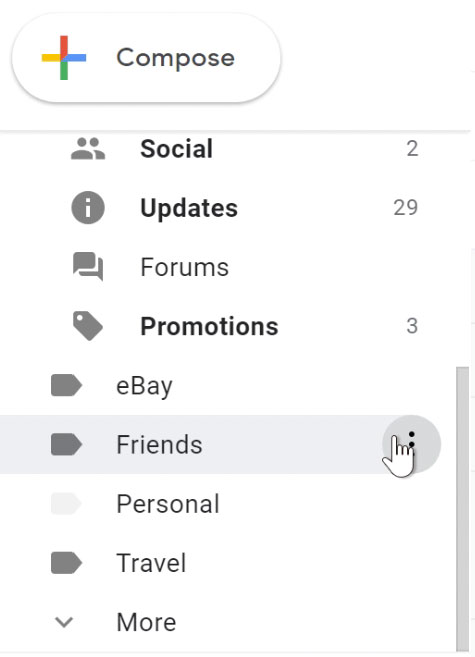
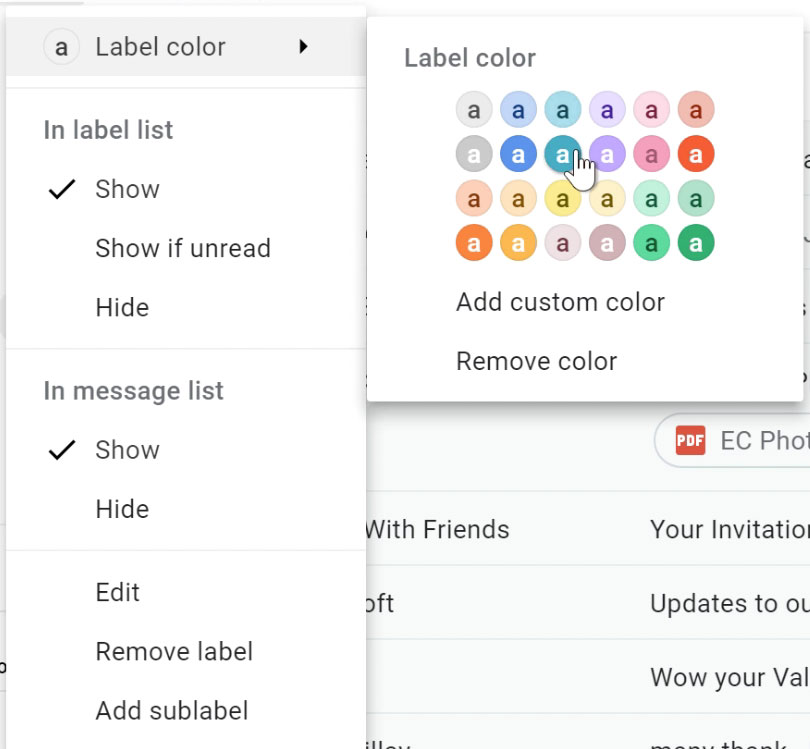

Filters can save you a lot of time by automatically performing actions like labeling or deleting messages as soon as they arrive in your inbox. You can create filters that look for a specific sender, recipient, subject, or specific words that are contained in the body of the email.
Watch the video below to learn how to create filters and search for an email message.
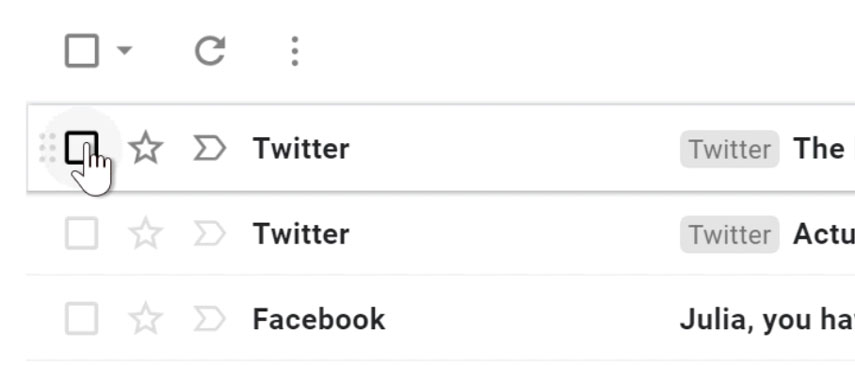
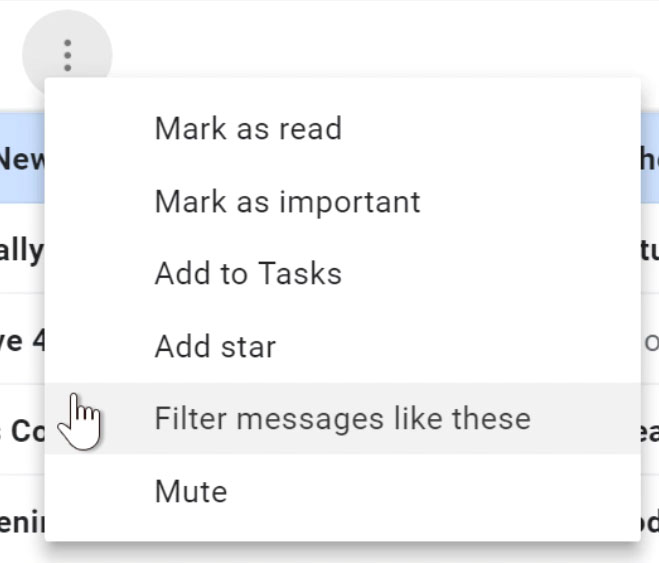
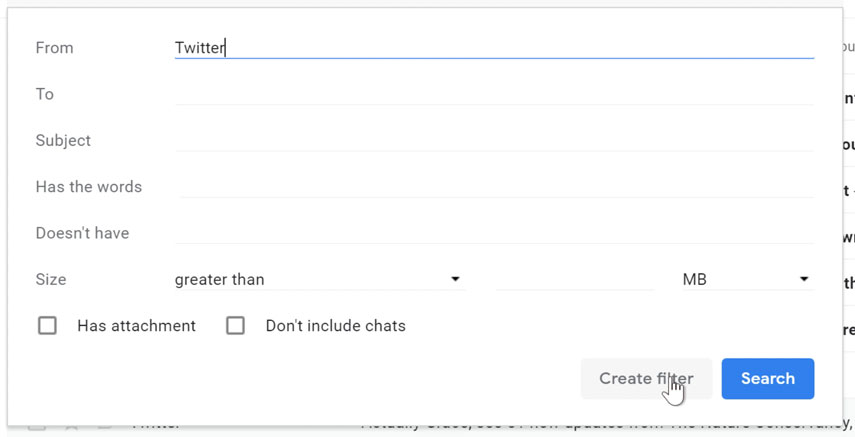
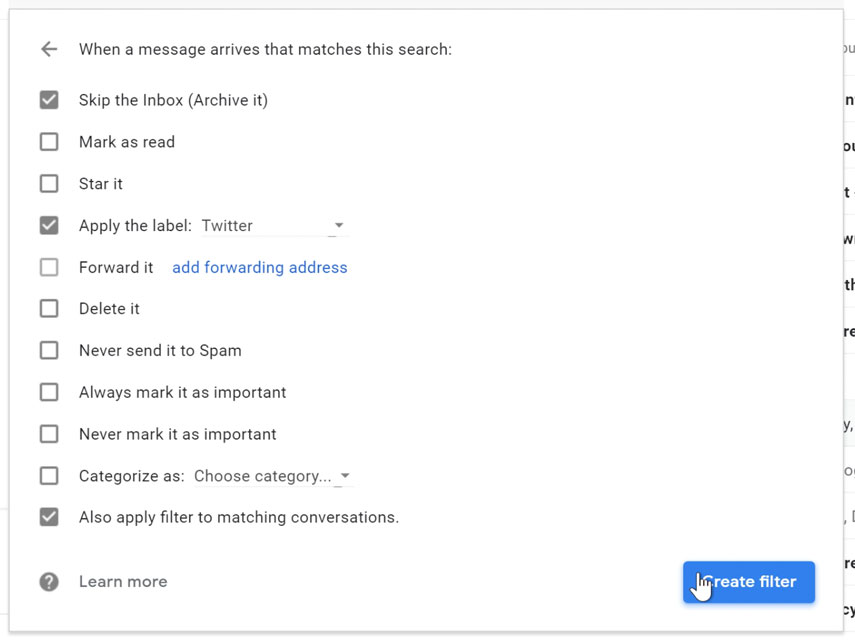
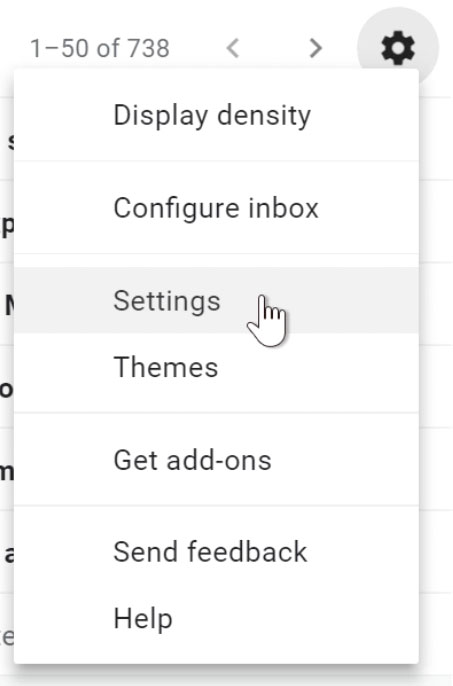

The search mail feature allows you to perform a Google search in your email. This means you can find any message, no matter how new or old. It searches every part of the message, so you can find a message even if you don't remember who sent it or if you never labeled it.


If you're still not finding what you're looking for, you can click Show search options to perform an advanced search.

For this challenge, you will need an email in your inbox. If you completed the previous lesson's challenges, you can use those emails. If not, send yourself an email by putting your email address as the recipient.
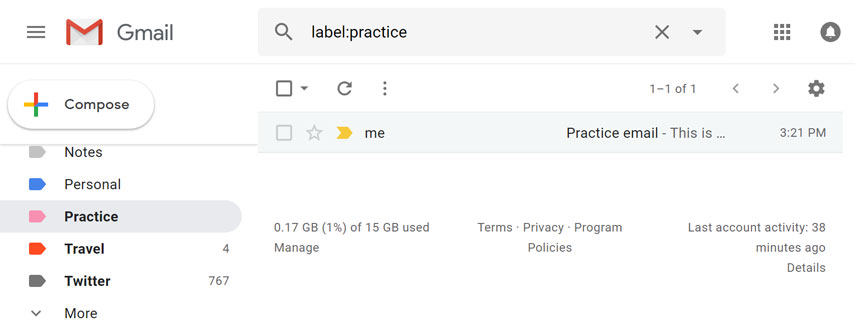
/en/gmail/gmail-for-mobile-devices/content/